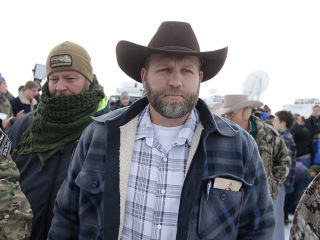A recent letter regarding the Bundy family claimed, “[The Bundys] don’t own the land; they lease it. If they won’t abide by the terms of the lease, then they can and should be given a chance to meet the terms of the lease, but if they won’t then the landlord (in this case the BLM) has the right to evict them and try to collect back rent.” This reflects a common misconception. If the assertion were true that the land is in fact leased, the logic would of course be unassailable. However, BLM grazing allotments are *not* leases (at least, some of them aren’t, and the Bundys claim theirs are among those that aren’t). The grazing fees the Bundys and others refuse to pay are explicitly described in law as *not* being lease payments. Some legal history is required to understand the situation.
Originally, homesteaders received grants of 160 acres each as fully private property: the homesteaders had full rights to water, forage, minerals, and access on the full 160 acres. They also had the right to prevent anyone else from accessing their parcels. As homesteaders moved west, they discovered it wasn’t possible to support a family on only 160 acres, because the land simply wasn’t as productive in the arid climate. Grants therefore became larger, growing as large as 640 acres, but even that wasn’t sufficient to support a family in many of the more desert areas. Congress was hesitant to grant even larger portions as fully private property, knowing the west had vast wealth in the form of other resources, and that homesteaders likely wouldn’t ever exploit those resources. So Congress came up with the grazing allotment. Under this plan, homesteaders still had their original grant of fully private land, plus they were granted access to all forage, and all water resources they were able to develop, on a larger parcel of land. Title to this land remained in the hands of the federal government, who could grant access to prospectors, hunters, and others, but the homesteader had full rights to the forage, rights to develop water sources, and rights of access to the land. These rights were treated as private property, which could be (and were extensively) traded and sold like any other property. The rights had no stipulations about the number of animals the homesteader could graze on the land, nor the seasons when they could graze.
Since that time, the federal government has reacquired some of these rights, but many remain in private hands. The Bundys trace their allotments to homesteading days. The BLM was established in part to help allotment owners (note: “owner” is the correct term for an allotment) manage various legal and administrative requirements, and grazing fees were meant to pay the BLM for that help. The law puts specific requirements on how grazing fees are to be used, including a certain percentage that is to go back to the land it came from in the form of improvements. The BLM has long ignored these requirements. Therein lies at least some of the Bundy’s justification for refusal to pay grazing fees.
Please don’t make the mistake of believing land law is as simple as “The government owns full rights to all the land and ranchers have to abide by whatever terms the government sets forth.” That is wholly incorrect. Ranchers, mineral developers, and others simply wouldn’t ever invest in land resources without the assurance that rights to the land were legally in their full control. – JT











Well, thank you! That was very helpful.